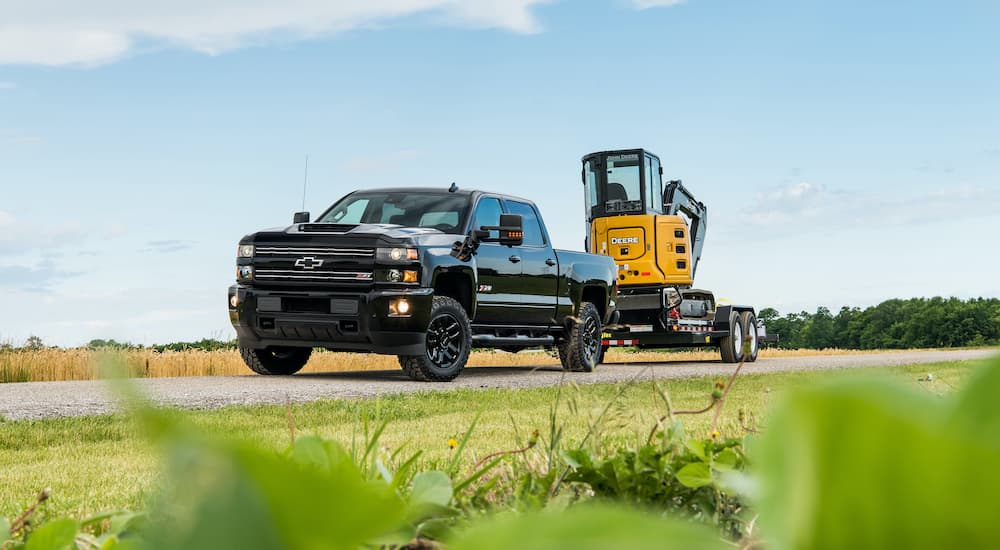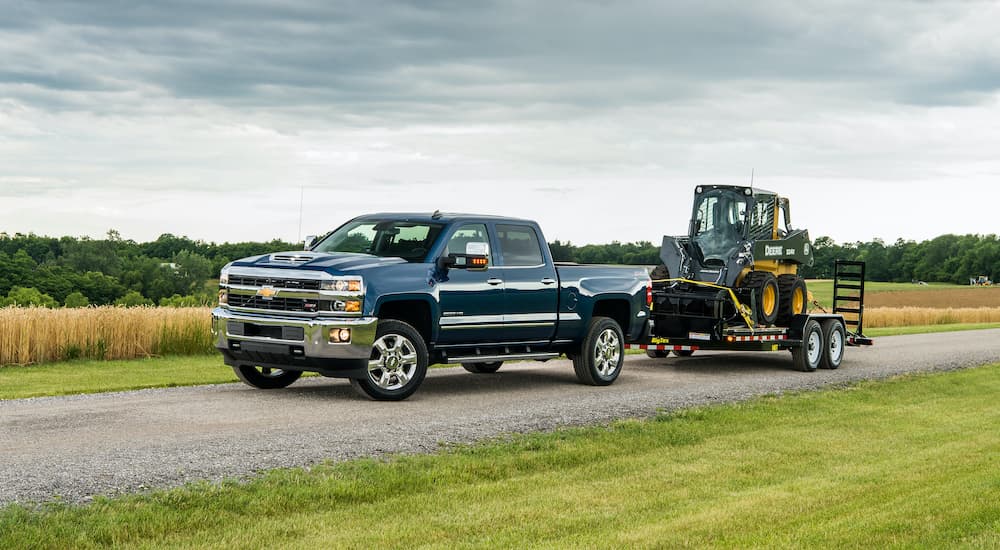For many drivers, leasing a vehicle is a great way to afford a new car at a fraction of the cost of buying it outright. But what should you do when your lease ends? Are you looking for Chevy end-of-lease details because you aren’t quite sure what step to take next? There are several options for drivers who are nearing the end of their lease, but which direction you should take will depend on your personal situation. The first thing to do is to stop and think about the choices you’re given and weigh each option carefully to help you better understand what you’re looking for. Maybe it’s time to shift gears and purchase your next vehicle, or maybe you’re content with your current vehicle, and you want to keep it.
Both keeping your current ride and purchasing a new vehicle are viable options, but this isn’t the case for everybody. After you spend some time talking to any driver who has leased a vehicle in the past, it’s likely not the only one they had. Why is this? It’s quite simple, leasing a vehicle means that you’ll have an easier upgrade path than you otherwise would. We’ll explain each option individually and help you decide which leasing path is the right choice for you.

Option #1: Lease Again
The first and arguably the most traditional answer to an end of lease is simply to find a new vehicle to lease. If this is your first lease, you’re likely interested in upgrading to a newer model. After all, isn’t one of the greatest advantages to leasing a vehicle is the ability to swap your old ride for the latest model without paying the price that comes with purchasing it outright? That’s exactly the case, and while upgrading may be a no-brainer to some drivers, there are a few reasons why it’s such a popular option.
Let’s take the Chevy Silverado 2500HD as an example since it’s a model that has received an overhaul not too long ago. Those who are nearing the end of their lease for this truck are likely to have a 2018 or 2019 model, which both were and still are vastly capable trucks. If you have a Silverado 2500HD from one of these model years, then you’ll have one of the two powertrain configurations inside, with the standard option being a 6.0L V8 engine that produces 360 hp and 380 lb-ft of torque.
The 6.0L V8 engine inside of 2018 and 2019 models comes paired with a 6-speed automatic transmission, and the maximum towing capacity caps out at 14,800 lbs. The more powerful offering at the time was a turbo diesel 6.6L V8, making 445 hp and 910 lb-ft of torque, which also came paired to a 6-speed automatic transmission and is capable of towing 18,100 lbs. Now, let’s see what happens if you were to trade in your lease for a newer 2021 model.
The main improvement that has been made to the Silverado 2500HD in recent years is its performance, with the base engine now being a 6.6L V8, creating 401 hp and 464 lb-ft of torque, with a 17,370 lb maximum towing capacity. While the more powerful engine is again a turbo diesel 6.6L V8 that produces the same amount of horsepower and torque as before, it’s now paired to a 10-speed automatic transmission and can tow up to 18,500 lbs when properly equipped. Reasons such as this alone are enough to warrant an upgrade over your previous model, and leasing makes this possible at an acceptable price.
Option #2: Buy Your Current Vehicle Outright
Another option that drivers tend to consider when their lease nears its end is purchasing their current vehicle. This may sound curious to some at first, but the more you think about it, the more it makes sense. Not every model within Chevy’s lineup has received a major makeover recently, so for some drivers, it makes perfect sense that the vehicle they’re currently driving is enough for them. Those who lease their vehicles will notice what’s known as a “residual” amount on their lease. Should you opt to purchase your vehicle once your contract is up, this essentially acts as the price that you’d pay, which will be lower than buying a new car. This eliminates the need for shopping as you’ll be fully familiar with your vehicle since you’ll have been the only owner, meaning nobody knows the vehicle better than yourself.
In some cases, your leased vehicle may have some damages that have occurred over the few years that you’ve had it in your possession, and the exchange for a new vehicle won’t be as simple as it would be otherwise. For example, if one or more of your cabin seats are damaged, this will result in a fee that you’ll be paying at the end of your lease. In this situation, some drivers will opt to purchase the vehicle with its residual amount and continue to operate it under full ownership.

Option #3: Buy A New Or Used Chevy
Maybe you see your lease ending as an opportunity to ditch leases altogether, and you feel that you’re ready to become the owner of a vehicle. The benefits to purchasing a vehicle outright are apparent from the minute you drive it off the lot – there’s a far more personal feel to using your vehicle as you’ll have complete ownership. This means that you have the right to modify your vehicle as you see fit and won’t have to worry about paying penalties for high mileage or minor damage. The only downside to ownership would be the fact that purchasing a vehicle is more expensive, and that’s the largest hurdle that makes the prospect of leasing so appealing to the eye.
What Should You Do?
Now that we’ve described some of the benefits that are associated with the varied options that you’re given once your lease is coming to a close, the next step is to decide which one is right for you. Every driver has different needs and expectations out of their vehicle, and a decision as important as whether or not to purchase your currently leased vehicle, lease a new one, or buy another vehicle entirely is something that each driver has to consider for themselves. What we can tell you, however, is that if you enjoyed the experience of leasing your current vehicle, then there isn’t a reason to stop now, but if you’re more interested in the prospect of owning a vehicle, then now’s the time to act.
We completely understand why some drivers are eager to switch it up every few years, and with examples such as what we saw with the Chevy Silverado 2500HD, a lot of changes can be made in a relatively short period. There’s also something to be said for those who enjoy their current ride very much, and it may already satisfy all of their needs, and for these drivers, it’s easy to recommend sticking with your current ride if financially feasible. Ultimately, the choice of what to do at your Chevy end of lease is up to you.



